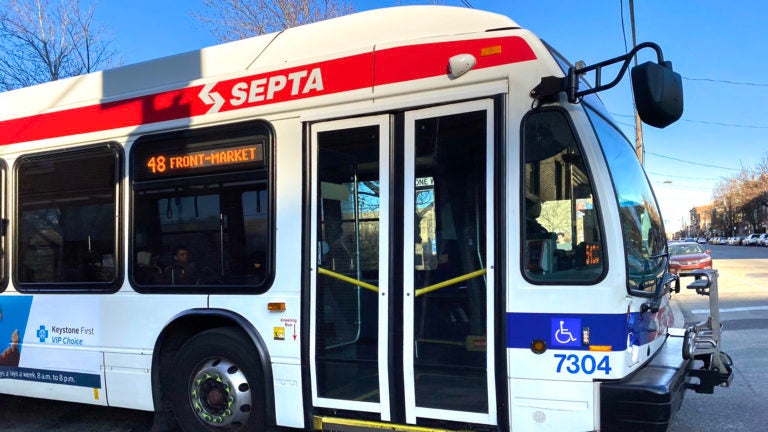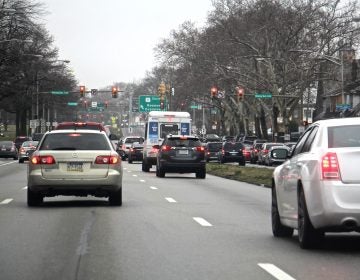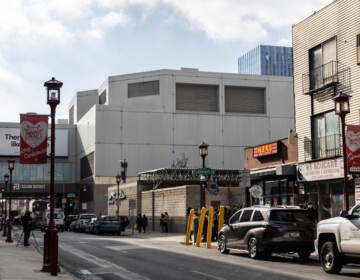Opinion: ‘On-demand’ bus service won’t do the job in the suburbs
SEPTA is looking to change low-ridership routes to an on-demand service that hasn’t shown any efficiency when tried in other cities.

(Danya Henninger/Billy Penn)
For the past year, SEPTA has been advancing plans for Bus Revolution, their cost-neutral redesign of both the urban and suburban bus network. This redesign is not going to expand transit service, but only reallocate existing service, which means that transit riders who depend on lower ridership routes could get left behind. Earlier last month, two draft proposals of the possible future of the SEPTA bus network were released.
Through this process, there’s been a question as to how to serve suburban areas with small, but heavily transit-dependent ridership. A solution proposed in both drafts is replacing high cost, low ridership fixed routes with “microtransit,” where riders request pick-ups and drop-offs on an app or over the phone. In fact, Option 1 assumes that if a SEPTA route can’t run 30-minute service, it should be switched to microtransit.
However, from looking at other transit agencies, the reality so far has been that no American microtransit route has come anywhere close to achieving higher ridership or lower per passenger costs than the worst performing suburban SEPTA routes.
On average, microtransit pilots across the U.S. have a ridership of zero to three riders per hour, with most pilots operating much closer to zero than three. For comparison, the Route 127, one of the most confusing and infrequent buses in SEPTA’s network, still moves an average of 13.9 passengers per revenue hour. When AC Transit in Oakland, Cal. replaced one of its low-performing fixed-routes with microtransit, the per passenger subsidy more than doubled. And when Kansas City attempted microtransit, the ridership was so low that by the end of the pilot, they ended up paying $1,000 per passenger to operate the service.
Despite microtransit’s poor track record, SEPTA is willing to use it to replace fixed routes that currently move an average of 39.4 people per revenue hour.
A big source of microtransit’s poor ridership is the fact that on-demand routing is simply nowhere near as efficient as fixed-route transit. Riders collecting themselves along a single line is one of the main factors that makes fixed routes so efficient at moving people. By making deviations to serve everyone who wants to get on the bus, passengers need to wait as the bus picks up an ever-changing amount of passengers, with no consistency as to how long that would take. Microtransit advocates will point to the fact that the “algorithm” will solve these inefficiencies, but so far, no algorithm has operated at anywhere near the efficiency of the least productive fixed routes.
Despite countless software tweaks, VTA’s Microtransit Pilot in Santa Clara was never able to move anywhere near the amount of people as a fixed route bus. And those adjustments aren’t free. While ACTransit Flex service’s switch to cheaper-to-run and maintain minibuses cut operating costs in half, almost all those savings were nullified by the technology costs required to manage on-demand routing.
Every time a fixed route bus has been replaced with microtransit, it has never attracted more riders to the new route than were displaced off the old route. When ACTransit replaced its Route 275 bus with microtransit, more riders switched to other fixed routes, that were a farther walk away, than the new microtransit service. With unpredictable service, difficult fare payment and complicated reservation requirements, it’s no wonder why most fixed-route riders never make the switch to microtransit.
The only reason why ACTransit has higher ridership, compared to other microtransit pilots, is because a majority of passengers board the bus when it returns to the BART station every 30-60 minutes like a normal bus. However, most of those same riders never reserved a ride to get to the station. Switching fixed routes to microtransit has always been a gamble for hypothetical new riders at the expense of current riders. It’s doubtful that the people pushing hardest for microtransit will be selling their cars to become one of its new riders.
Just because SEPTA’s current suburban bus network is more efficient than microtransit doesn’t mean there isn’t room for improvement. The only part of microtransit that actually saved money was switching to cutaway minibuses, which have lower operating and licensing costs than conventional 40-foot buses, or even SEPTA’s current fleet of 30-foot buses. it would make sense to run more, smaller vehicles along fixed routes.
Nearly 20 years ago, Translink, Metro Vancouver’s transit agency, did exactly this with its lowest ridership suburban buses. Dubbed “Community Shuttle Routes”, these buses, at 30 minute or better frequencies, currently provide last-mile connections from major transit hubs and service to rural and indigenous neighborhoods. Boarding and fare payment works exactly like any other bus, and riders can make free and seamless transfers to any other mode of transit.
After 20 years in service, these routes have served more passengers at a lower cost per rider. For comparison, both AC Transit’s Flex in the Castro Valley, CA and Translink’s Community Shuttle Route 147 in the South Slope section of Burnaby, BC, provide last-mile connections between rapid transit and comparably low-density suburbs at nearly the same labor costs. Yet, Translink’s fixed Route 147 moves 57 riders in its busiest revenue hour, while the ACTransit’s microtransit Flex only moved 7.
In virtually every environment and by every metric, microtransit is far worse than fixed route transit. Despite claims that public transit agencies need to run microtransit to combat falling ridership, no North American transit agency that has implemented it has seen an increase in ridership. And among every North American metro area with increasing transit ridership, none of them implemented microtransit.
At the Philly Transit Riders Union, we know that we can’t expand public transit with apps and algorithms. Expanded public transit means predictable and frequent routes operated by well paid, unionized transit workers. If SEPTA wants to improve suburban service, they should plan to run minibuses on fixed routes, which, unlike microtransit, have a proven track record of attracting riders. In the meantime, we’ll be asking riders if they want their buses replaced with “microtransit”– a service that’s harder to use and more expensive to operate. To find out what SEPTA’s proposed changes might mean for you, call or text the riders union at 267-313-6060 or email org@phillytru.org.
Patrick Garraud, a regular transit rider, is a resident of Lower Bucks County and a member of the Coordinating Committee for the Philadelphia Transit Riders Union.

Get daily updates from WHYY News!
WHYY is your source for fact-based, in-depth journalism and information. As a nonprofit organization, we rely on financial support from readers like you. Please give today.









